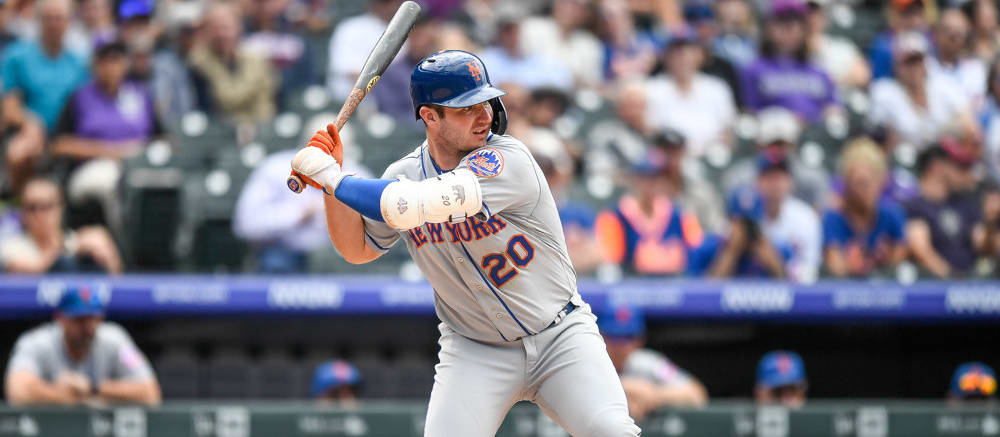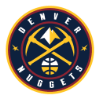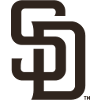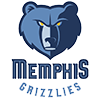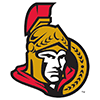In case you missed it, last week I released my first set of dynasty rankings since taking over the rankings from Ian Kahn, whose role with The Athletic expanded. Ian did an outstanding job with the rankings and I believe he will have a fresh set of dynasty rankings over at TA in the coming weeks, which I strongly recommend you check out. He will also be coming on the Prospect Podcast with Clay Link and I next week, so be on the look out for that.
These rankings are for OBP leagues, but you can click the Show AVG League Arrows button to see whose value increases or decreases in AVG leagues. They are for 15-team leagues where each team starts two catchers, so downgrade catchers across the board if you play in a league where only 15-20 catchers are started. This doesn't need to be said for most of you, but I still see people confusing dynasty leagues with keeper leagues, which can be a big mistake. A dynasty league is a league where you can keep ~90% of your roster from year to year. If you select five, 10 or 15 players to keep every year, you play in a keeper league, not a dynasty league. The main difference in valuations is that proximity to a player's prime years and a player's ceiling matter much more in keeper leagues. Like with a projection system, dynasty rankings should be used as a tool, not as a rigid means
In case you missed it, last week I released my first set of dynasty rankings since taking over the rankings from Ian Kahn, whose role with The Athletic expanded. Ian did an outstanding job with the rankings and I believe he will have a fresh set of dynasty rankings over at TA in the coming weeks, which I strongly recommend you check out. He will also be coming on the Prospect Podcast with Clay Link and I next week, so be on the look out for that.
These rankings are for OBP leagues, but you can click the Show AVG League Arrows button to see whose value increases or decreases in AVG leagues. They are for 15-team leagues where each team starts two catchers, so downgrade catchers across the board if you play in a league where only 15-20 catchers are started. This doesn't need to be said for most of you, but I still see people confusing dynasty leagues with keeper leagues, which can be a big mistake. A dynasty league is a league where you can keep ~90% of your roster from year to year. If you select five, 10 or 15 players to keep every year, you play in a keeper league, not a dynasty league. The main difference in valuations is that proximity to a player's prime years and a player's ceiling matter much more in keeper leagues. Like with a projection system, dynasty rankings should be used as a tool, not as a rigid means of differentiating players. Before you even look at a set of dynasty rankings, you need to have a very clear vision for your dynasty team.
Are you a realistic threat to win your league this year? If not, are there win-now trades you could make that would make you one of the favorites to win your league this year? If you answered both of those questions with a negative, then you need to enter some form of a rebuild. It may not need to be a three- or five-year rebuild, but the worst place you can be in a dynasty league is making win-now moves without a roster that's ready to win now. I don't equate trading a prospect for young big leaguer as a win-now move, as the young big leaguer may be more likely than the prospect to be a part of your next contending team. Rebuilding doesn't mean there has to be a big sign above your team that says PROSPECTS ONLY. There are plenty of non-prospects who are more valuable to a rebuilder than a contender — good pitchers who are set to miss time in 2021 working their way back from Tommy John surgery or young, promising players who may be blocked for the time being at the big-league level are two archetypes that come to mind. Whether you're contending or rebuilding, you need a realistic plan and you need to be focused on achieving your goals even if you have to make some hard decisions along the way.
Now that you've been honest with yourself about where your dynasty team stands, you should know which types of players to go after. If you're a contender, you can basically operate using your short-term valuations while acknowledging the market value of the prospects on your roster and in the FYPD. If you're a rebuilder, you should focus on prospect rankings you trust (here are mine) while also looking for opportunities to acquire young big leaguers whose value could tick up over the next year or two.
Feel free to ask me about any player I ranked or didn't rank in the comments or on Twitter, but I picked 15 guys who I thought it'd be interesting to break down:
34. Pete Alonso
I've been friends with Ian Kahn for almost five years and he has never disagreed with me as strongly or as passionately as he did when I initially ranked Alonso No. 23 overall. Alonso is the only player whose ranking I have changed since these rankings went live — he's now down to No. 34, which is still way too high for Ian's liking, but I stand by it. Alonso is entering his age-26 season and is projected by every public projection system to hit 40-plus homers with at least a .338 OBP. I'm weighing his 693 PA from 2019 more heavily than I'm weighing his 239 PA from the funky pandemic season. I've also only heard glowing reports about Alonso's work ethic. He's been described to me as a baseball rat — a guy who eats, sleeps and drinks baseball — and those guys typically have a lot of staying power. I was in a startup draft (more on this later) where Spencer Torkelson and Andrew Vaughn both went ahead of Alonso, which I found absurd. I guess since we haven't seen them fail, they're a bit more shiny, but Alonso's version of failing was a 118 wRC+ and a top-10 finish in home runs. At a certain point, a player's floor and proximity has to matter in these rankings, and Alonso brings plenty of upside (he hit 53 HR as a rookie!) with that floor. The point of Ian's that I found most convincing were concerns over how his body and bat speed will age, which is why I lowered him. The absolute best part of all of this is that Ian tried to convince me to take Alonso late in the startup draft of The RotoWire Dynasty Invitational (more on this later) back in 2017-18 when I thought he was destined to be a short-side platoon player, so it's hilarious that now I'm the one arguing passionately for Alonso.
53. Yordan Alvarez
Alvarez is on the short list of the toughest players to rank for dynasty leagues. I went from being the high man on Alvarez during his prospect days and his debut season to seemingly being the low man on him, and it has literally nothing to do with his talent. He's huge — Aaron Judge is listed as being heavier than Alvarez, and there are guys like Miguel Sano who are really massive, but it's safe to say Alvarez is one of the most physically imposing players in the game. He also had surgeries on both knees at the end of last season. There's no way of knowing whether he will continue to have lower-body issues in the coming years, but it's the type of thing that would be foolish to dismiss. For as long as Alvarez can stay healthy, he will mash, but the next time he deals with "discomfort" or "soreness" in his lower body, his dynasty value will take a tumble. I hate when people say they're "willing to be wrong" like it's an act of bravery, but in this case I'm willing to take certain players I view as safer (Michael Conforto, for instance) while acknowledging they don't have Alvarez's established ceiling.
62. Dansby Swanson
If I had to pick one hitter who is going in the top 150 of redraft leagues that I will have the most exposure to this year, it's Swanson. I did a draft that started when the playoffs were still going on and we were flying blind — there was zero ADP data or public projections available — and I took Swanson with the No. 49 overall pick. That's about where I value him, but now I know that I can wait a couple rounds before I need to pull the trigger. I don't know why he's not viewed as a dynasty building block by more people, but I'm pretty sure he's a five-category shortstop on one of the best teams in baseball who is just entering his prime. He's a really good hitter who may be getting better. He strikes out more than I'd like, but the quality of his contact is pretty awesome for a player who should steal double-digit bases and whose glove will keep him in the lineup every day.
89. Sandy Alcantara
If I had to pick one pitcher who is going in the top 150 of redraft leagues that I will have the most exposure to this year, it's Alcantara, but you probably already knew that. By big-league starting pitcher standards, he's still very young — most guys don't really establish themselves as rotation anchors until they are 26 or 27, and Alcantara turns 26 in September. While he doesn't miss bats at an elite clip, he has several big-time pitches, and since shifting to the sinker as his primary fastball back in August of 2019, he has a 2.86 ERA, 1.10 WHIP and 101 strikeouts in 116.1 IP. The lack of strikeouts would be a bigger knock if this was the top of the mountain for Alcantara, but he's really only been working with this pitch mix for a little over half a full MLB season. I don't expect him to be a 250-K guy, but he should be a ratio anchor who gets close to a strikeout per inning and he's just 25.
96. Clint Frazier
Since the start of the 2019 season, Frazier is slashing .267/.347/.497 with 20 HR in 406 PA, good for a 124 wRC+. Now, entering his age-26 season, it would seem that near-everyday at-bats are there for the taking, and I expect this to be the year Frazier TAKES those at-bats. His bat speed is still ridiculous, and he teased us last year with a significantly improved eye at the plate while showing he can hit no-doubters to all fields. I'm betting that this is the last chance to buy before he is seen as foundational piece in dynasty leagues.
124. Austin Riley
The quality of Riley's contact fell last season, but for a 23-year-old with easy plus raw power, the more important area of focus was getting his strikeout rate into a manageable range. I've been high on Riley for a while, but even I didn't think he'd get down to a 23.8 K% in Year 2 against MLB pitching. Showing that he can make contact like that opens up an exciting world of possibilities. This isn't a bad lineup to hit sixth or seventh in, as he'll be hitting behind five or six All-Star caliber players. Riley won't look like a finished product this season and will still go through some pretty cold stretches at the dish, but he could be a starting caliber 3B in dynasty leagues for the next 10 years.
154. German Marquez
Marquez seems to be a polarizing player in all formats, but I'd argue he shouldn't be polarizing at all. He's an excellent pitcher — a top-25 starter in the game — who should be benched at home when possible. He turns 26 this month and has already made 106 starts in the majors, which is quite the accomplishment. In any 15-team league, he has value, even if you refuse to start him at home. In leagues with daily roster moves (more on this later), he is even more valuable because you can start him whenever you please. However, on the off chance the Rockies decide to trade him for a massive haul whenever they accept that a rebuild is necessary, he becomes a clear top-100 dynasty asset who could push up inside the top 75. If Marquez was on Atlanta, for instance, I'd have him ranked ahead of Max Fried, who sits at No. 72. You know what you're getting while he's in Colorado, essentially a super streamer, and there's that added element of upside in the event he gets dealt. Even if he never gets traded, he will surely sign elsewhere after the 2024 season, and while I would never assume any pitcher will be healthy and pitching five years down the road, it's still something to factor in.
155. Max Scherzer
For me, Scherzer is the hardest player to rank for dynasty leagues. At the same time, he is pretty easy to evaluate if you are just a manager in a dynasty league and don't have to concern yourself with putting together a broad set of rankings. For the top four or five teams in a league, Scherzer is very valuable. For the remaining teams, his only value is whatever you can get for him in a trade. If you happen to have Scherzer on your roster and know that you should be looking to trade him, you have a couple options: You can trade him this week to the highest bidder, or you can gamble that he will hold his value until June or July and then wait for one of the contending teams to decide to push all in (at least one of them will). You'll get a better return in the latter scenario, but his value would obviously crater if he gets hurt.
170. Rowdy Tellez
171. Edwin Rios
I'm going to write up these big boppers together since the evaluation is pretty similar even though they aren't exactly the same type of hitter/player. With recent signings by the Blue Jays and Dodgers, the expectation is that both players will not play as much as we'd hoped a couple months ago. This is probably true in the short term, which is why these are perfect targets for a rebuilding team in dynasty. Both of these mashers have the potential to be No. 4 or No. 5 hitters on good teams in the near future, so if you are looking at contending in 2022 or 2023, now is a great time to try to pry them away from a hopeful contender. I don't think either guy will be as good as Luke Voit, but there was a similar buying opportunity with Voit after the 2018 season, as there was skepticism regarding his playing time heading into 2019 and the legitimacy of what he did in a small sample the prior season.
285. Cal Quantrill
I wasn't super high on Quantrill as a prospect, but he grew on me the more I watched him in San Diego, as he looked like a pitcher with significant promise who hadn't quite put it all together. Cleveland obviously saw something they liked as well, and he couldn't be in a better situation to maximize his abilities. I'm not exactly sure what Cleveland will do with him, but I'd guess he'll throw his changeup more than 11 percent of the time while decreasing his fastball usage. He's definitely better than Logan Allen and there's not a big gap for me between Quantrill and Triston McKenzie going forward.
297. Harrison Bader
Bader is less valuable in AVG leagues, but he's sneakily a pretty nice OF5 in OBP leagues with a chance to get better. His elite center field defense will keep him in the lineup, which will give him opportunities to continue making improvements at the dish. He's also projected for 21/13 by THE BAT X (in 133 games) and doesn't turn 27 until June.
326. Nick Solak
This is the type of player I've had success fading in the past — the solid hitter who is so terrible in the field that he needs to come close to maxing out offensively to stay in the lineup. Francisco Mejia and Willie Calhoun are some recent examples of guys with this profile. If Solak were on roughly 25 other teams, he'd be a bench bat, but this Rangers roster is just terrible enough that he could play a decent amount this year despite his defense. However, if he ever slumps at the plate, he could lose playing time, and once the Rangers get more talent onto the roster, Solak will be an obvious candidate for some sort of demotion.
342. Garrett Cooper
Cooper is probably the only guy I'm really in on for 2021 who has gotten basically zero buzz. In 140 games (554 PA) since the start of the 2019 season, he is hitting .281/.347/.459 (117 wRC+) with a 24.9 LD% and 5.7 IFFB%. He uses the whole field, and there's room for him to get even better, considering he has been rocking a 50.7 GB% amid this success. He's basically the player people hope Lewin Diaz will be. To make matters even more interesting, he has a 114 wRC+ for his career against lefties AND righties. I see a middle-of-the-order lineup staple entering his age-30 season while others see a part-time player who will get squeezed out of playing time in the near future.
352. Myles Straw
All the buzz out of Houston suggests they really want to see what Straw can do as an everyday center fielder, and I'm definitely here for it. There's obviously a chance he simply can't do enough damage offensively to justify keeping his bat in the lineup, but he had a career .380 OBP and 111 wRC+ while going 10-for-11 on stolen-base attempts in 138 PA prior to the 86 PA he logged last season, so if he can simply return to that level of play, I think he'll provide enough value in the field and on the bases to justify everyday playing time. Straw could be a high OBP guy who steals 30-plus bases annually. If he reaches that ceiling, he'd be a better OBP option than Nick Madrigal.
RDI 2018-2020
It was with a heavy heart that I shuttered the RotoWire Dynasty Invitational last week. I started up that 20-team dynasty league in the winter of 2017 and invited my best friends from the industry and a few from outside the industry to take part. I had been the commissioner of at least one dynasty or keeper league dating back to 2008, and now I am the commissioner of zero leagues, and I have to say, it feels great. I've simply lost the fire to put the necessary time in to run a quality dynasty or keeper league.
While I lost that fire, I would have kept the league running indefinitely had it been a strong, healthy league, but it simply wasn't one anymore. There were two reasons for that: First, I invited people based on relationships, not based on level of interest and level of skill. Second, it was a bragging rights league. When you don't have at least 80-90 percent strong management in a dynasty league, a giant gap will inevitably form between the best teams and the worst teams, and when there's no monetary commitment, it's easy to see why managers wouldn't want to put forth a ton of time and effort to dig out of a hole. Three managers had messaged me this offseason to say that they wouldn't be back for 2021, and I took that as a sign that it was time to close up shop. Ian Kahn and I co-managed a team in RDI, and the bond we'd formed through that co-manager relationship was the only thing holding me back from ending the league, but he gave me his blessing, so I followed my instincts.
The great Ryan Bloomfield of BaseballHQ won the first two seasons of RDI and can say that he accounts for two-thirds of the league titles. His first three picks back in the winter of '17-18 were Nolan Arenado, J.D. Martinez and Christian Yelich. He also drafted Gerrit Cole in the sixth, Luis Castillo in the seventh, Sonny Gray in the ninth, Jack Flaherty in the 15th and Patrick Corbin in the 16th, so you can see why he was the class of the league in 2018 and 2019.
My friend Bret Sayre of Baseball Prospectus won the final year of the league, edging out Ian and I in a dominant stretch run. Bret took Francisco Lindor, Rafael Devers and Yoan Moncada with his first three picks, which is a pretty textbook way to start a dynasty startup draft. However, the masterstroke was selecting Juan Soto in the ninth round, which ended up being the best pick of the entire startup draft. He also drafted Blake Snell in the 11th, Adalberto Mondesi in the 13th and Lourdes Gurriel in the 37th.
Ian and I had some big hits of our own, taking Bo Bichette in the sixth, Yordan Alvarez in the 17th, Tyler Glasnow in the 18th and Anthony Santander in the 40th while anchoring the lineup with Freddie Freeman and Ozzie Albies in the first and third, respectively. You can see the entire startup draft results here.
My New Favorite Dynasty Format
There is no better way to craft and hone a set of dynasty rankings than by taking part in a competitive startup draft. With that in mind, and because I've always got the itch, I joined a 15-team startup dynasty league with a $300 annual buy-in a couple months ago. The format was a little different than the majority of the dynasty leagues I play in, but I'm now in love with it.
Here are the basics:
- 15 teams
- 6x6 roto
- HR, RBI, R, SB, AVG, OPS for hitters
- IP, K, ERA, WHIP, Saves x 2 + Holds, K/BB for pitchers
- 59-man rosters
- 34 MLB (23 active)
- 25 MiLB
- Each team starts two catchers
- Daily lineups
That last aspect is what I love. I used to hate the idea of daily lineup leagues because of the time commitment, but I love having one high stakes leagues with daily lineups because there is even more skill involved and you can extract value from a much higher percentage of the player pool. Here is my roster:
As you can see, there are players I drafted because of the daily moves aspect that I wouldn't touch in a weekly league. I don't think I'll win the league this year, as I employed a best-player available strategy that led to selecting guys like Bobby Witt and Brennen Davis who won't help this year and I didn't take enough starting pitching in the early-to-mid rounds to realistically win in Year 1, but I plan to contend for the title in 2022 and beyond.
Here is the board for the first 26 rounds for those who are curious about how different teams attacked the startup draft:
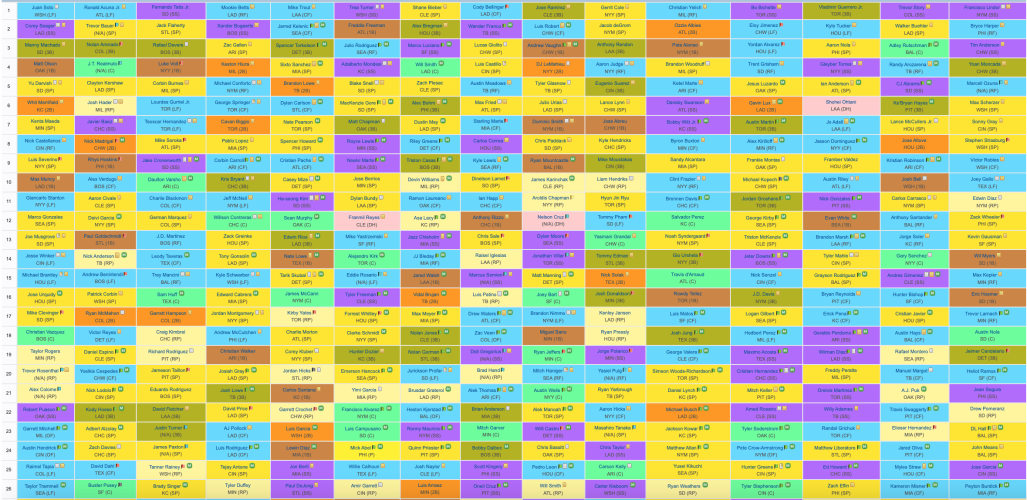
Matt Eddy of Baseball America and Brad Johnson of FanGraphs co-manage the team that started Cole-deGrom, and they are the clear favorites to take home the first place loot in the inaugural season.


